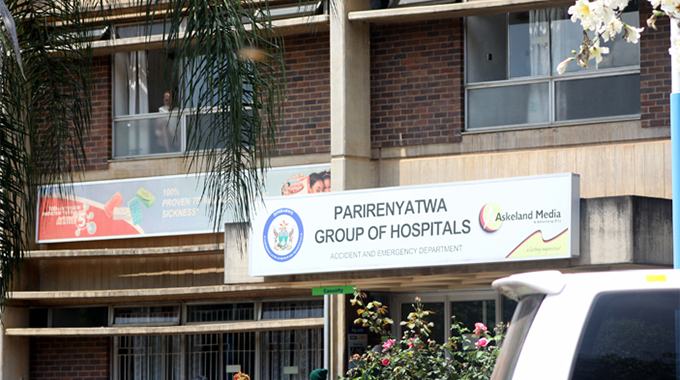Berries export earnings in whopping 601pc jump

Edgar Vhera Agriculture Specialist Writer
Policies initiated by the Second Republic have led to a whopping 601 percent increase in berries export earnings from US$2 million in 2019 to US$14 million in 2022.
Statistics from Zimbabwe National Statistics Agency (ZimStats) show that berries export volume also rose 395 percent from one to 5 million kg over the same time period.
The average price of berries increased 41 percent from US$2,14 per kg in 2021 to US$3,01 in 2022.
The horticulture sector is composed of flowers, vegetables, berries, citrus, nuts, avocados, deciduous and other fruit, cuttings and plants, spices and herbs as well as tea and coffee.
The berries classification consists of cranberry, mulberry, blueberry, strawberry and raspberry.
Ranking of the value of horticulture exports by group show that the berries sector rose from number eight out of 11 in 2019 with US$2 million exports to number two in 2022 with US$14 million exports.
What triggered the 601 percent horticulture sector growth?
The National Development Strategy 1 (2021-2025) which is being operationalised has among others the following key strategies to restructure and re-invigorate the horticulture sector; improving security of land tenure systems for horticulture producers, a legal framework to curb side marketing of produce under contract schemes, developing a unique competitive brand for Zimbabwe’s horticultural products, promoting the export of value-added horticulture products, reduce post-harvest losses and raise export earnings, diversifying and scaling up production of blueberries, raspberry and macadamia nuts, to formalise the domestic horticultural markets and improving ease of doing business.
Government’s fiscal and monetary measures that placed agriculture at the centre of the country’s economic policy in terms of exports and foreign currency generation coupled with relaxation of export procedures.

Blueberries in holding trays
The Government classified the horticulture sector as a low hanging fruit capable of turning around the country’s fortunes in terms of increased foreign currency earnings, employment creation and economic development in a short period of time.
At the inaugural horticulture investment forum in November 2021, the Reserve Bank of Zimbabwe (RBZ) governor Dr John Mangudya said the horticulture sector was one of the low hanging fruits, with turnaround times of less than three years. “The horticulture sector is labour-intensive as it instigates activities like sorting, grading, and packaging. Horticultural revolution is pro-poor as it generates additional employment opportunities in rural areas where labour is abundant, which is critical for achieving widespread and equitable growth,” said Dr Mangudya.
Dr Mangudya said the RBZ supports horticultural production through provision of foreign currency through the auction system for importation of key raw materials and equipment, arranging facilities that include letters of credit (LCs) to finance essential imports such as fuel, equipment, chemicals and herbicides among others.
Ministry of Finance and Economic Development last year launched the US$30 million horticulture export revolving fund (HERF) that was meant to capacitate horticulture export growth.
Finance and Economic Development Minister Professor Mthuli Ncube said the HERF had the potential to close the funding gap and spearhead increased productivity.
“It will finance bankable projects with a focus on value addition to restore Zimbabwe’s position as one of the leading horticultural exporting countries in the region,” said Professor Ncube.
The Government has put among others the following incentives that exporters are benefiting from; suspension of duty on agriculture capital equipment (S.I. 6 of 2016), anchor farmer incentive, value added tax (VAT) zero rating of farm inputs.
Rebate of duty is also granted on materials used in the preparation and packaging of fresh produce for export [Section 132 of the Customs & Excise (General) Regulations].
Horticulture Recovery and Growth Plan (HRGP)
The Government also crafted the Horticulture Recovery and Growth Plan (HRGP) in 2020 that outlined plans to ensure that the country’s horticulture exports are upwards of
US$ 1, 469 billion annually from 2025 onwards.
The HRGP encompasses the entire horticulture value chain including domestic production, processing and value addition as well as export market promotion.
Joint Venture (JV) system
Lands, Agriculture, Fisheries, Water and Rural Development permanent secretary Dr John Basera said Government had initiated the joint venture (JV) system for increased production.
“The Government has instituted a good policy environment and is promoting access to land through issuance and allocation of land to investors to be, with the smartest option being the JV framework as promulgated in 2019 and operationalised in 2020.
“Almost 2 000 JVs have been approved on about 200 000 ha with interest being on the protection of investment, investors and land holders,” said Dr Basera.
Blueberry Joint Venture success story
Dr John Basera led delegates on a tour of blueberry farming operations at Ivanhoe farm in Goromonzi in July 2022 to inspect the Horticulture Recovery and Growth Plan (HRGP) in motion.
A beneficiary of the JV arrangement who is into the blueberry exporting business, Drip tech founder and managing director Mr Robert Bob Henson of Palmlife chronicled his success story at Ivanhoe farm in Goromonzi.
“We started the project in 2020 as a greenfield investment under 10ha, we added an additional 20ha to close the year on 30ha.
“Fifteen hectares were developed in 2021 and another 15ha in 2022 to bring total area to 60ha under blueberry,” said Mr Henson.
Mr Henson attributed success of the project to incentives offered to investors such as the joint venture agreements, incremental incentives and duty-free importation of capital agriculture equipment.
He said Zimbabwe’s unique selling proposition in the blueberry industry was quality, taste and production time.
The country’s blueberry reaches the market in winter earlier before the arch-rival Peru floods the market with about 300 000 tonnes of its product, said Mr Henson.
To emphasize the profitability and labour intensity of blueberry, Mr Henson said “by putting of 45ha under blueberry we are able to achieve income greater than 4 000ha of irrigated tobacco and employing about 100 times more new labour.”
He said the farm’s operations were benefiting from labour provided by Juru growth point and surrounding areas residents.
Mr Henson plans were afoot to increase the area to 200ha in areas where there is adequate manpower.
“75 percent of our blueberries are exported via the cheap sea route and 25 percent is air bound in order to maximise on earnings and take advantage of the window period when prices are high,” said Mr Henson.
The 2022 Horticultural Development Council (HDC) annual report said they had successes on the policy and enabling business environment in engagements with Government.
The report cited reduction of compulsory liquidation from 40 to 25 percent as one of the achievements while retention of export proceeds in an exporter’s foreign currency account (FCA) was increased to 120 days.
Zimbabwe Investment Development Agency (ZIDA) exemption of retention on foreign investments was granted, said the report.
The report also highlighted that all new exports were exempted from compulsory liquidation to encourage new exporters.
The Intermediated Money Transfer Tax (IMTT) was slashed from four to two percent while the ability to repay foreign loans registered through local commercial banks prior to liquidation was granted, said the report.
Zimbabwe Berry Growers Association vice chairman Mr Stuart Torr said blueberry cultivation was the major cause of the increased production within the berries sector.
“Yield from blueberry plants increase as they mature from year one, doubling the output in year two, reaching their optimal in year three and maintaining that yield from year four subject to good management.
“As new varieties and market demands change the current crop of established plants may be removed before reaching 10 years,” said Mr Torr.









Comments